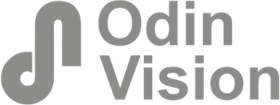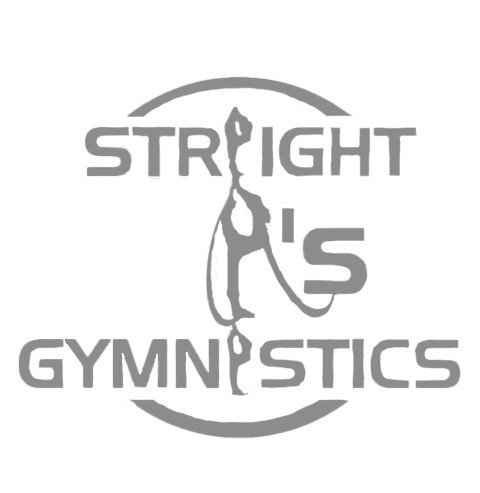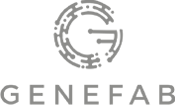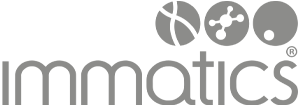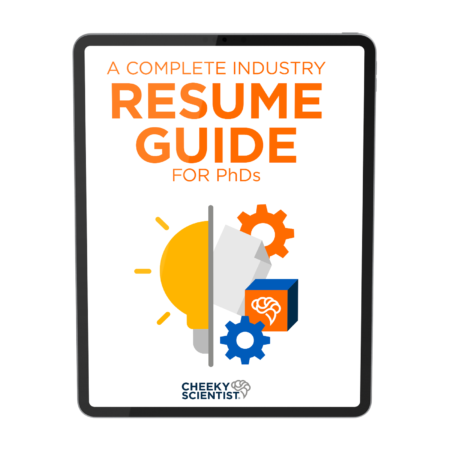How PhDs Should Structure Their Industry Resume Bullet Points

If you’ve been reading Cheeky Scientist blogs for some time, you probably know that the best way to get an industry job is by applying through a referral.
That way, you can skip the resume submission step and move straight into a phone screen.
So, you’re probably thinking that you shouldn’t waste time on a targeted resume for each position you apply to.
But here’s the reality: even though you shouldn’t rely on resumes to get your foot in the door, employers will still want to see your resume and LinkedIn profile before they interview you.
I was recently talking to a member who has hired many PhDs since transitioning into industry and this is what they have to say:
Many times, your industry resume will make the first impression to an employer who is preparing to interview you or might have a say on whether or not you get hired.
I mostly hire writers, but I’ve gotten resumes that are targeted for R&D or clinical trial manager positions. When this happens, it makes me want to call out the interview altogether.
I don’t want to waste my time interviewing a candidate who doesn’t even know what position they’re applying for.
In contrast, when I see a well structured resume that is targeted for the position and includes tranferable skills and measurable results, I enter the interview in a good mood.
I feel like I know the candidate and have a better idea on how they can help the company achieve their goals.
So, no matter if you are applying through an online portal or through a referral, always make sure to submit a targeted industry resume if you want to get hired.
Why You Should Always Target Your Resume
For every open position, a company gets 250 resumes on average – big companies like Apple and Google can receive up to 2,000 resumes for each open position.
The hiring committee will shortlist 10 of those candidates to go through the interview process and only 1 will get hired.
Currently, more than 95% of fortune 500 companies use applicant tracking system software (ATS), an artificial intelligence programmed to select the resumes that better match an open position.
In companies that use ATS as part of their selection process, only 60 resumes out of the initial 250 will make it into the hands of an actual person. This means 4 out of 6 resumes are weeded out by the ATS.
If you don’t have a referral, you don’t stand a chance if you apply to a position with an untargeted resume that doesn’t have a proper industry format.
And as you saw from the story in the previous section, you can lose your chances at a job if you apply with an untargeted resume even if you have a referral by making the wrong impression to someone in the hiring committee.

So, how can you ensure your resume makes it past ATS and impresses every person who reads it?
You target your resume for each position by adding the right information in every single bullet point.
How To Craft High-Quality Bullet Points
If you’re doing your resume correctly, you will have many bullet points on it.
To start, you will have three in your resume summary, which is the most important section in the whole document.
Then, you will have three or five bullet points for each previous experience, and at least one for each award and hobbie.
Each of these bullet points must be crafted with intention and show that you understand the needs of the company and that you are the best candidate for the role.
3 things your bullet points need to include
All the bullet points in your resume should follow the same structure.
They should start with a transferable skill, followed by your technical expertise, and end with a quantified result.
Transferable skills are your biggest asset when it comes to looking for an industry job, and they are the most important skills that employers are looking for.
That’s why they should come at the beginning of your bullet point, you should highlight them right away.
Following your transferable skills, you should add a technical skill or technical expertise that relates to the target position. This means that you should use the key words included in the job posting or that you heard in an informational interview, even if they are not the terms you currently use in academia.
Keep in mind that sometimes the lines between tranferable and technical skills get blurred. For example, research on itself is a tranferable skill, but research experience in a specific knowledge domain might be a technical skill.
As long as you start your bullets focusing on skills that are necessary for the job and relate to the results at the end, you should end up with a high quality bullet point.
Once you have stated your skills, use transition language such as “as evidenced by” or “leading to” to introduce your quantified results.
Ending your bullets with quantified results serves two purposes.
First, eye tracking studies show that people pause on numbers when skimming a document. So by adding numbers (not writing those numbers down), you’ll increase the time that employers spend looking at your resume.
Second, you show that you understand the language of industry. That you know that setting and accomplishing goals helps a company grow.
You might be thinking that you’ve spent your whole life in academia and don’t have any quantified results.
This is simply not true, you are just not used to thinking about your experience in the context of achieved results.
You can add to your resume number publications or presentations, number of methodologies you’ve improved or optimized, number of collaborations, amount of grant funding you’ve secured, number of patents…
If you’ve reduced the amount of time it takes to run a protocol or the amount of money it costs to get a result, you can also add that.
Even if you think your results don’t sound impressive, remember that it’s not so much about the results, but about showing employers that you understand the importance of quantifying your achievements.
Organizing the 3 parts of your bullet point into a sentence
When it comes to crafting complete bullet points, I recommend getting note cards of three different colors and writing one component per card.
For example, all your tranferable skills in blue cards, your technical skills in yellow cards, and your quantified results in pink cards.
Then, mix and match your cards until you come up with your biggest career highlights: bullet points that relate to each other, but also are specific for the job that you’re applying to.
Make sure that the three components of your bullet point make sense together, but don’t overanalyze it.
I assure you that you can take almost any transferable skill you have with any quantified result and any technical experience and put them together in a meaningful way.
After analyzing and playing with your cards for some time, you’ll be able to make a list of bullets that you can use in the different sections of your resume.

Below, you will find some finished bullet points you can use as inspiration. See if you can identify the tranferable skill, measurable results, technical skills, and the transition language that connects the components:
- Knowledgeable innovator with expertise in drug discovery, resulting in 5 publications and 7 cross-functional collaborations.
- Strong leadership skills and experience managing research professionals on collaborative projects, leading to 8 publications and $250,000 in lab grant funding.
- Excellent relationship builder with advanced skills in biological and chemical systems, as evidenced by the optimization of 9 methodologies and the setup of 5 cross-functional collaborations, which led to €1.5 million in lab grant funding.
- Excellent collaboration skills demonstrated by managing a multifaceted biochemical research project, resulting in the development of 3 international collaborations and £1.2 million in grant funding.
- High level strategic planner with experience analyzing large scientific datasets, as demonstrated by the optimization of 3 high throughput methodologies, resulting in 2 new medical treatments.
- Knowledge of current industry trends and experience communicating complex topics to diverse audiences, leading to 3 award-winning scientific presentations and the publication of 1 micro biology textbook.
How to create a professional summary with your bullet points
Your professional summary, which is composed of three bullet points, is the most important section of your industry resume.

Besides your contact details, your summary is the only section that will be at the top third of the first page of your resume. This region is called the visual center because that’s where people’s eyes spend most of their time when looking at your resume.
It’s also the main part that the ATS will review, 80% of the keyword strength that most ATS algorithms designate is in the visual center.
The three bullet points of your professional summary must be your top career highlights and should give an idea of who you are and what you bring to the table as a job candidate.
The structure of your summary bullets should be the same as the rest of bullet points in your resume, but each of those bullets should communicate something slightly different.
Your first bullet should be similar to an elevator pitch. It should convey who you are, what you want, and why the employer should care.
This means that you want to mention the job title in that first bullet point. The job title is by far the most important key word of your resume and far too many people fail to mention it.
After the job title, include the most relevant transferable and technical skills to the specific role, and finish with a result that relates to the position. This is your star bullet point.
You should focus the second bullet point on the relevant technical skills for the position. You will also add transferable skills and measurable results, but focus on how your technical expertise makes you the best candidate for the role.
Finally, the third bullet point should focus more on the tranferable skills that make you the right fit for the job.
If you do this correctly, every bullet point on your resume will be the highest quality possible, and all of them will come together to make a high quality resume that will get through the ATS, into the hands of an employer, and lead to a phone screen.
Concluding Remarks
Whether you apply to a position through a referral or a job portal, a well crafted industry resume will increase your chances of moving to the next stage of the hiring process and getting hired. To ensure you have a resume that will make it past ATS and impress every person who reads it, you have to ensure every bullet point in your resume has the right information. A high-quality bullet point starts with a relevant transferable skill, followed by a technical skill mentioned in the job posting, and finishes with a quantified result with numerical values. You can write the separate components on note cards and mix and match them together to create impactful bullet points. Make sure to select the three best bullet points that show why you are the perfect fit for your summary section. This will ensure that you have a high quality resume that will convince employers to call you for a phone screen.
If you’re ready to start your transition into industry, you can apply to book a free Transition Call with our founder Isaiah Hankel, PhD or one of our Transition Specialists. Apply to book a Transition Call here.

ABOUT ISAIAH HANKEL, PHD
CEO, CHEEKY SCIENTIST & SUCCESS MENTOR TO PHDS
Dr. Isaiah Hankel is the Founder and CEO of Cheeky Scientist. His articles, podcasts and trainings are consumed annually by millions of PhDs and other professionals in hundreds of different countries. He has helped PhDs transition into top companies like Amazon, Google, Apple, Intel, Dow Chemical, BASF, Merck, Genentech, Home Depot, Nestle, Hilton, SpaceX, Tesla, Syngenta, the CDC, UN and Ford Foundation.
Dr. Hankel has published 3X bestselling books and his latest book, The Power of a PhD, debuted on the Barnes & Noble bestseller list. His methods for getting PhDs hired have been featured in the Harvard Business Review, Nature, Forbes, The Guardian, Fast Company, Entrepreneur Magazine and Success Magazine.
More Written by Isaiah Hankel, PhD




































